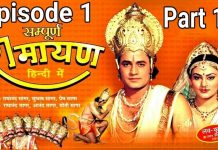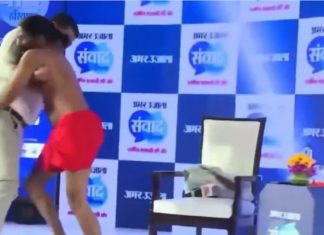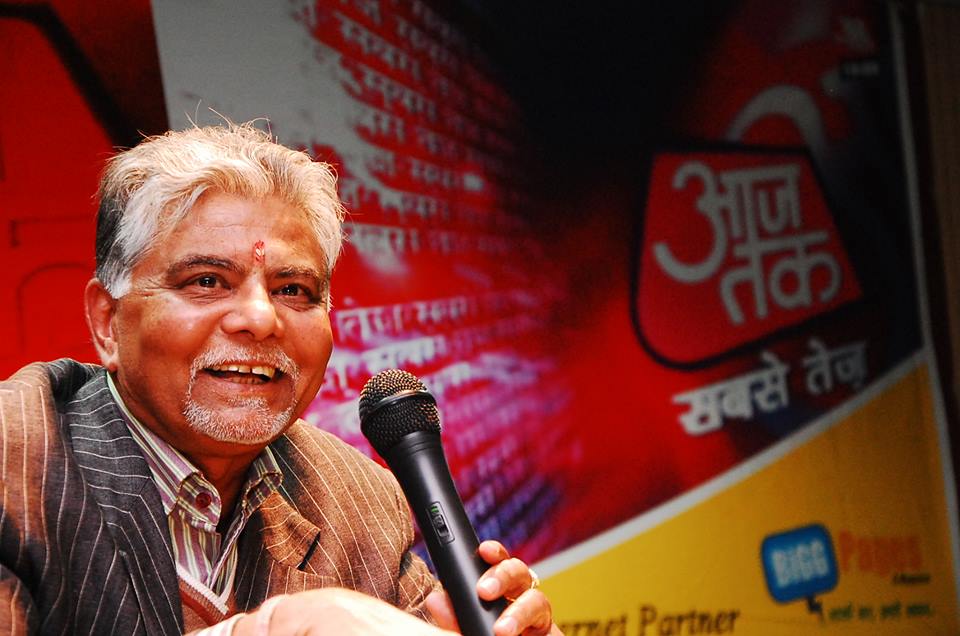अगर किसी महिला एंकर के दांतों में ब्रास लगाने पड़ जाएं तो उन्हें ऑफएयर कर दिया जाता है जबकि पुरुष एंकर गुटखा खा-खाकर दांत सड़ा ले तो भी कोई मुद्दा नहीं है. महिला एंकरों पर स्लिम, सुंदर, ग्लैमरस दिखने के दवाब इस तरह बने रहते हैं कि एंकर तनु शर्मा को इंडिया टीवी के अधिकारियों की प्रताड़ना तक झेलनी पड़ती है.
लेकिन मारवाह स्टूडियो के मालिक संदीप मारवाह को ये बोलने में कोई शर्म नहीं है कि ये मीडिया की प्रकृति है, नियम ही है कि महिला एंकर अगर देखने में सुंदर है तो थोड़ी कम जानकार होने पर भी मौके दिए जाते हैं और एंकर तो ग्लैमरस, स्लिम दिखना ही होता है.
23 साल की प्रियंका धींगड़ा साधना मीडिया ग्रुप की पर्सनालिटी डेवलपमेंट काउंनसलर है. उनका अपना अनुभव है कि एंकरिंग और खासकर एस्ट्रलॉजी से जुड़े शो के लिए उन्हें अपना वजन 10 किलो कम करना पड़ा..दर्शकों का ध्यान खींचने के लिए आपको हर हाल में सुंदर दिखना होगा नहीं तो वो मिनट भर में चैनल बदल देंगे.
अमृता दत्ता की रिपोर्ट न्यूजरूम की और खासकर एंकरिंग की दुनिया पर ठहरकर बात करती है जिसमे इंडिया टीवी की एंकर रही तनु शर्मा के मामले को प्रमुखता से शामिल करते हुए लिखा है कि इसके पीछे भी स्लिम,ग्लैमरस दिखने यानी एंकर को लेकर लिंग आधारित भेदभाव का ही मामला रहा था. हालांकि इस रिपोर्ट में तनु शर्मा के वो सारे पक्ष भी शामिल हैं जो मीडिया की नैतिकता क्या उसके प्रोफेशनल होने तक के सवाल को लेकर चैनल को कटघरे में खडा करते हैं.
विनीत कुमार
फायनेंसियल एक्सप्रेस की रिपोर्ट :
Female anchors: At face value
The shadow of sexism that lurks in 24×7 news channels in India and the demands it makes of its female anchors.
The journey from Agra was not easy, but 22-year-old Prachi Pandey is here — in a run-down, three-storied grey building in Noida, from where seven channels of the Sadhna Media Group are beamed to north India, and from where its media school operates. Tiny, unassuming classrooms and a slim library is all of it but it is better than the institute in her hometown where mass communication diploma classes never took off. Here, for Rs 90,000 for a one-year course, she has learnt to write a script, face as well as handle the camera and anchor a show. A year into the course, she has a job as an assistant producer at VIP News channel, though she hopes to graduate to anchoring shows. Trendy black glasses perch on her nose, and with a warm smile, she speaks about watching the news as a teenager and deciding that the “media” is what she wanted to be a part of. “To be an anchor, you don’t just need glamour but knowledge as well,” she says.
Priyanka Dhingra is a “personality development” counsellor at the institute. She was an anchor at the Rashtra Khabar channel till May this year. She is immaculately turned out, blonde streaks glow in her hair, turquoise earrings set off the black kameez she is wearing. In her classes, she says, she teaches her students poise: “If you are in a meeting, you can’t gulp down water, you should take small sips, with elegance.” What will it take Pandey to become an anchor, I ask? Her glasses have to go. “And she would definitely need to lose weight,” says Dhingra, 23, who had to lose 10 kgs for her job, which involved reading news bulletins and hosting astrology shows. “Viewers change channels in minutes. You need a beautiful anchor to hold their attention,” she says.
Of the hundreds of young people who flock to the media schools tucked away in the warrens of Noida’s Film City, the majority wants to be the anchor — the face of primetime, the furious defender of the nation’s right to know. To them, Dhingra’s rulebook, perhaps, does not seem out of place, being a part of the self-fashioning that every profession demands. But what does it say about life on the other side, about the newsrooms where young women come up against the shadows of sexism? “There is constant pressure to look younger, slimmer and prettier on women anchors. A woman with dental braces may be asked to go off camera but a male with gutka-stained teeth is a non-issue,” says Arfa Khanum, who has been in the profession for 14 years, working as an anchor for Sahara TV, NDTV and now Rajya Sabha TV.
Whatever be the truth of her allegations, when news of the attempted suicide by an India TV anchor broke in June, it seemed to reflect the crushing pressure that is a part of television newsrooms.
Thirty-one-year-old anchor Tanu Sharma accused two of her seniors, Anita Sharma Bisht and M Prasad, of driving her to the edge. From Chandausi in Sambhal, Uttar Pradesh, Sharma joined India TV in February this year, after stints in Jain TV and Sahara Samay, among other channels. Bisht, she says, complimented her “on her assets” and asked her to “socialise with politicians”, a demand she alleges had nothing to do with her job. When she refused, she says her harassment began: she was hauled up and yelled at for her appearance, her attire and her work. “I was told I wasn’t good or glamorous enough and that I did not have the tehzeeb for a big channel. I spent money buying trousers I could not afford but Anita Sharma would reject all of them,” she says. India TV has rejected Sharma’s allegations, and said that this was a case of a subordinate’s personal vendetta against a senior, respected colleague. It has slapped a case of defamation on Sharma and two websites who covered the case. When we met her in a flat in Noida, Sharma said, “They picked on me because of my background, I come from a small town.”
***
Sandeep Marwah sits in front of a painting of galloping horses in a room which is large and florid in its aesthetic. He is the head of the Marwah Studios, which also runs a media school for TV journalists, besides a film school, a fashion designing institute, a management institute and a school of performing arts. “This is the maternity hospital of all the news channels in Delhi,” he thunders. “NDTV, Zee, all started operations with our facilities.” Media students can expect to earn between Rs 15,000 and Rs 20,000 a month on their first job, he says, which is higher than the Rs 8,000-Rs10,000 a Sadhna Media student will bargain for. When we ask him about women in the profession, he interrupts us to say, “It’s the law of nature, of media, that wherever there are women, there is glamour. Koi sharm nahi hai bolne mein. In that she has an upper hand over boys, even if she is less intelligent, she will get a chance,” he says.
But contrary to what Marwah would believe, the nature of the beast that is television demands telegenic faces and presence, not fair faces with straight hair and short, black jackets yanked out of an assembly line. Many channels promote a diversity of anchors and reporters, while others play by stereotypes. Varsha Singh, a journalist with a Hindi news channel based in Delhi, is from Lucknow, with a decade-long career in news. A few years ago, the 31-year-old desk hand took an in-house test for anchoring and found herself hosting a news show. But she was moved out of anchoring, she says, because the channel had problems with her dusky complexion. “Nobody told me anything but you get to know from the way a channel works; when you find other reporters being denied a political beat because they are too dark, you know why,” she says. In Hindi and regional channels, Singh says, appearance and glamour often become metrics to judge women anchors. Agrees Renuka (name changed), a 31-year-journalist who moved from Hindi to English news TV. “The most common perception is that women need to be dolled up. The channel has very few expectations from them. It’s not uncommon for a male colleague to say, ‘Gajab lag rahi ho’ and expect you to feel flattered, and not offended.”
***
24×7 news became a phenomenon in India in the late 1990s and early 2000s, and women journalists were a part of that moment, setting the agenda and driving the change, claiming a space in news organisations as equals. Natasha Badhwar, who was the first woman to be recruited as a cameraperson at NDTV in 1995, remembers it as an ideal media company for young women. “There were absolutely no ‘safety’ nets, we were thrown into the deep end, we were travelling without male escorts, covering everything from bomb blasts to plane crashes in the first week of work,” she says. Sonia Singh, current editorial director of the channel, and who joined it in 1992, says, “In that sense, we were luckier than print because we didn’t have a top-heavy male-dominated workplace where women then entered at a junior level.”
Five months into her job, Badhwar found herself in Aurangabad with an abusive senior producer, who was touching her inappropriately and using obscene language against her. She called her boss in Delhi, who asked her to abandon her assignment and fly back. She filed a sexual harassment case, and found “complete and total support”. “The man apologised in writing, but I refused to accept it and they respected that. Eventually, they asked him to leave. There were colleagues who stopped talking, women who wouldn’t work with me, men who thought I was a man-hater. But the organisation stood behind me,” she says.
Nearly two decades later, newsrooms have become more competitive and aggressive. The second-on-second pressure to deliver on deadlines are more manic, tempers easily lost and being yelled at a rite of passage. “In such an environment, if a woman or a man protests against bad behaviour, you risk being called weak,” says Prerna Subramanian (name changed), 30, a former anchor and producer. In enshrining toughness or bullying as a survival strategy, the workplace — always male-dominated — can become a space for the alpha male on the romp. When Sarika Verma (name changed) moved from NDTV to Times Now in 2008, she found that “the biggest shift was in the way you were spoken to as a female employee.” “The boundaries of the personal and professional were transgressed repeatedly. Anything could be used against you, your marital status, your personal life,” she says.
In November 2012, the entertainment editor of TV Today had just resigned from her post and was serving her notice period, when she had a meeting with the Delhi-based editorial head of the channel at her Mumbai office. He began by telling her to “hire hot, sexy anchors, someone like you”. “Then he asked me why I was leaving. ‘I heard you are in a new relationship, log keh rahe ke ***** ko naya ladka mil gaya hai. Why are you in a long-distance relationship? I am sure you have many boyfriends. Tum jaisio ke toh har shahar mein ek hota hai, Delhi mein ek, Bombay mein ek. Yeh kaun sa wala hai?’” she says. She recalls cutting the conversation short, and how deeply offended she had been by the exchange. She later filed a sexual harassment complaint with the editor-in-chief of the channel, which she alleges was, at first, dismissed by the HR head, who also threatened her with legal action. The woman persisted, and a sexual harassment committee was formed in June 2013. (Despite repeated mails, the current head of HR, TV Today, refused to react to the allegations.)
The price for flagging improper behaviour is often exacting. “I am not just a newsreader. I can do reporting. I am a sub-editor. Yet after this, no one wants to hire me,” says S Akila, a 28-year-old former anchor of Sun TV, Chennai. This is the sexual harassment case she filed in November against her seniors Vetrivendhan and V Raja, the former chief editor. Akila joined Sun TV in December 2011, and a few weeks later, she alleges Vetrivendhan “started making advances. When I refused to be friendly with him, he put me on the 4 am shift for a month-and-a-half at a stretch. V Raja, who was the HOD, unfortunately knew I was going through a rough patch in my personal life and they both tried to exploit my situation.” In November 2012, in a conversation with Akila, Raja allegedly complimented her on her looks and asked her what favours she could do if she was confirmed in her position. In March 2013, Akila filed a complaint with the police. In July this year, a Chennai court filed a non-bailable warrant against Raja. “I do not know if the bosses at Sun TV knew about the way girls were treated at the workplace or whether they allowed it to happen. There was no one to be approached for filing an internal complaint. In the media, we talk about so many issues. But no one wants to talk about how we treat women.”
That’s the conversation Daljit Ami, the former editor-in-chief of a Chandigarh-based Punjabi channel beamed in the US and Canada, wished to encourage when he set up a sexual harassment committee this year, in response to a woman employee’s complaint about a senior who sent her suggestive messages and made explicit remarks in her presence. He says the reaction to the move revealed a lot about the complete lack of understanding of a woman’s space in a masculine newsroom. “Media institutions have not created an environment, a mahaul, where sexual harassment is acknowledged. Mostly, women speak up when they have been harassed a lot, pushed to the limit. Even when there is a complaint, it is not treated with seriousness. There is always a question about who instigated the woman to file a complaint? There is not even the awareness that if you advise the complainant to settle things, forget the incident, that amounts to wrongful pressure,” he says.
In Noida, as Prachi Pandey readies for a shift, struggling to stick to the diet that will bring her down from 69 to 60 kilos, no one’s sent her a reality check yet.











